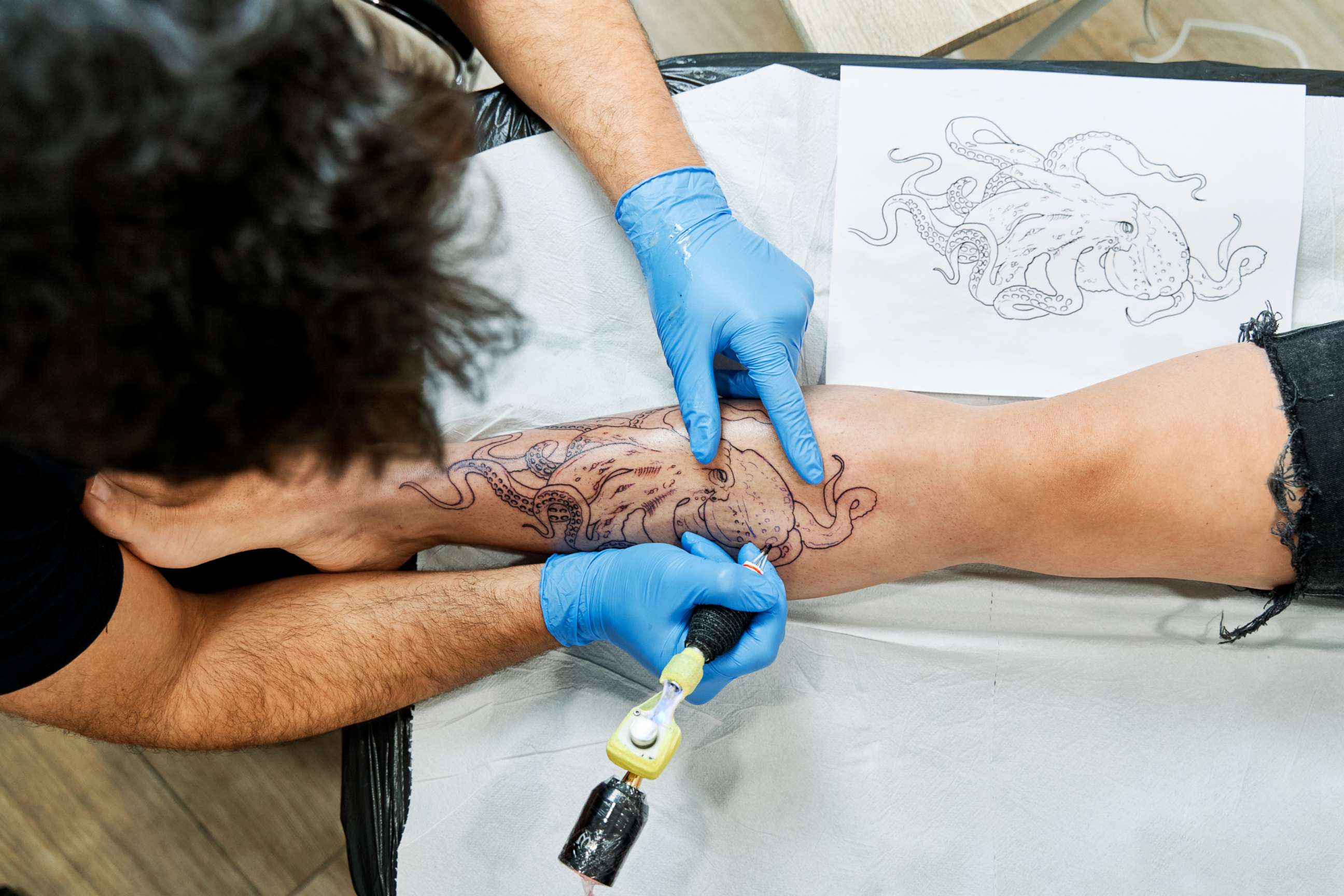Tattoo ink is under-regulated, scientists say
Ink is sometimes made from products that were not manufactured for tattoos.
Researchers are raising concerns about the quality of tattoo ink, saying the ink isn't always properly labeled and, in some instances, could contain possible carcinogens. But the biggest problem, researchers say, is that the tattoo ink is relatively unregulated, meaning the ingredients inside this ink are not always known.
A team of researchers at Binghamton University presented their work at the American Chemical Society Fall 2022 meeting and launched a website – What’s in my ink – to assist consumers and artists as it get more information and completes additional research.
Although tattoo inks are injected into the skin, they are not considered medical products. Tattoos are regulated as a cosmetic product in the United States, and cosmetic products and ingredients do not need to be approved by the Food and Drug Administration prior to going on the market for use by the public, with some exceptions.
"Surprisingly, no dye shop makes pigment specific for tattoo ink," Dr. John Swierk, the principal investigator of the project, said in a press release with the American Chemical Society. "Big companies manufacture pigments for everything, such as paint and textiles. These same pigments are used in tattoo inks."
This means modern tattoo ink is sometimes made from products that were not manufactured for tattoos – including printer ink.
"Our focus is that we want to understand the science better," Swierk told ABC News, "We want to empower artists and consumers to be knowledgeable."

The team of researchers uses multiple techniques to detect the particle size and molecular composition of tattoo pigments, using highly specialized machines that can analyze the inks at a molecular level.
"The most surprising thing we found is just how much inaccuracy there is," Swierk said. "I won't say that it's inaccurate for every single manufacturer … but certainly, we've looked at a pretty significant subset, and we're finding a recurring issue of incorrect labeling."
The team has been studying both carrier solutions – which Swierk said is the liquid portion that carries the pigment, typically made out of a mix of alcohol and water – and pigments. In 20 of the 24 carrier solutions examined by the team, they found alcohols that were not listed on the label, Swierk said.
Another aspect the team studied was particle size.
"Usually the rule of thumb is that particles with a particle size of around 100 nanometers or less start to become a concern from the human health standpoint," Swierk said, "because they can penetrate into cell nuclei."
The team has so far analyzed the particle size of 16 inks, and has found that about half had an average particle size of around 100 nanometers or significantly smaller.

"Having a tattoo with ink does carry some risks," Dr. Mark Abdelmalek, dermatologist and ABC News Correspondent, told ABC News. "The risks aren't very common, but they are there."
Abdelmalek noted the body will sometimes react to tattoo ink as if it's a foreign substance, causing a granulomatous reaction, which he describes as almost an allergy beneath the skin.
"You have this complex interaction, and this manifests with bumps on the skin or raised areas on the skin," Abdelmalek said. "It's a little bit like detective work because you have a person who comes in with a multicolored tattoo, but you might be noticing that only the red ink is reacting."
Symptoms of an allergic tattoo reaction typically include itching, infiltrated papules, nodules, or plaques that are restricted within one color of a tattoo. From 2004-2018, there was an increase in Google search volumes for “itchy tattoo”, “tattoo bumps”, “raised tattoos”, and “swollen tattoo”.
"If you are a type of person who has had allergic reactions to other things in the past, you really want to think about knowing what kind of dyes are going into your skin," Abdemalek said.
The red colors, Abdelmalek pointed out, tend to cause the most problems with allergic reactions. Additionally, those with pre-existing skin conditions, such as psoriasis, may have exacerbations or flares after getting a tattoo.

Should someone decide to have their tattoo removed at a later date, Abdelmalek also noted that some colors are harder to remove using laser tattoo removal than others – namely, oranges, yellows, greens, and turquoise.
Tattoos have been around for centuries in many cultures and areas of the globe – archaeologists have found evidence of tattooing from as long as 7,000 years ago. As of 2019, 31.5% of adults in the United States have at least one tattoo.
Dr. Alexandria C Wellman, a resident in the combined Anatomical and Clinical Pathology program at the University of California Los Angeles, is a part of the ABC News Medical Unit.




